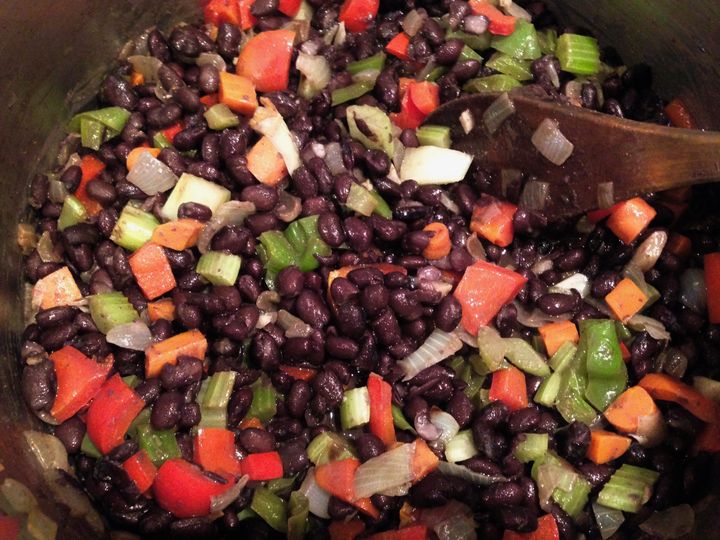My heart goes out to Houston, Rockport and all the areas of Texas devastated by Hurricane Harvey, one badass storm in a series of badass storms. It’s been 12 years since Hurricane Katrina beat New Orleans to a pulp and 25 years Hurricane Andrew pummeled Miami. I remember it. As I write in my book Feeding the Hungry Ghost, “The wind screamed and smacked the house till I thought we would twist and spin up and away like Dorothy’s house in The Wizard of Oz.” And now we're eyeing Hurricane Irma. The truth is, the whole world is experiencing extreme weather conditions more frequently. We’re feeling everywhere on the planet.
These natural disasters have a man-made cause — us. With each flood, hurricane, tornado, bizarre blizzard, scorching summer and melted ice cap, it gets harder and harder to shrug off. “If we’re going to make it as a civilization or species, we have to change,” says Dr. Richard Oppenlander, author of exhaustively researched books Food Choice and Sustainability and Comfortably Unaware. “To move the world in the direction that’s truly more sustainable, the most efficient way possible means adopting fully organic, plant-based agricultural systems.”
He’s not the only one to say so. It’s the gist of the documentary film Cowspiracy.
Oppenlander’s two books present a “platform, a timeline. Tipping points have already been reached,” he says. “We have 50 to 60 years of top soil use, and with climate change, we have a 50 to 75 year range before things become unbearable.” The people of Texas might argue we’re at unbearable now.
Addressing extreme weather doesn’t necessarily require extreme methods. Try eating more plants for the good of the planet. Try Meatless Monday, try Taco Tuesday, swapping up beef for beans. A new study in Climatic Change recommends swapping beans for beef as a significant way to reduce carbon emissions. Researchers include Gidon Eshel, who contributed to Livestock’s Long Shadow, the seminal research work by the United Nations’ Food and Agriculture Organization linking livestock production to global warming, and Joan Sabaté, a leader in the field of human health.
Other countries recognize the link between our food choices and climate change. Denmark’s government went vegan to create public awareness and take the lead. Here in America, we have vegan Senator Cory Booker versus a president who backed out of the Paris accord and a White House cabinet full of climate change deniers. If they can’t take a leadership role, we must. We created the problem. The solution will have to come from us, too.
“It’s hard to change our food preferences, but we have to start looking beyond self,” as Oppenlander says. “We’re not the only thing that lives on earth.”

Cuban Black Beans A beloved South Florida staple, Cuban black beans keep covered and refrigerated for several days, and like many pulse dishes, the flavors deepen and improve over time. And I can tell you, canned beans are lifesavers during and after a hurricane when the power goes out and your fridge goes.
4 cups black beans, cooked or 2 15-ounce cans black beans, rinsed and drained
3 tablespoons olive oil
2 onions, chopped
4 cloves garlic
1 jalapeno, chopped
1 red pepper, chopped
1 carrot, chopped
2 stalks celery, chopped
2 teaspoons cumin
1 teaspoon coriander
1 teaspoon paprika, sweet or smoked
1/2 teaspoon dried epazote or oregano
1 tablespoon tomato paste
1/2 cup vegetable broth or bean cooking liquid
1 tablespoon sherry vinegar
sea salt and fresh ground pepper to taste
optional — a handful of fresh cilantro leaves, chopped
In a large soup pot, heat olive oil over medium-high heat. Add the chopped onion, stirring occasionally until onions begin to turn golden and translucent, about 3 to 5 minutes.
Add the chopped garlic, jalapeno, red pepper, carrot and celery. Continue cooking for another 5 minutes, or until all the vegetables soften. Add the cumin, coriander, paprika, epazote, tomato paste and vegetable broth. Then pour in the cooked black beans, stirring to combine.
Splash in the vinegar and bring beans to a low boil. Cover and reduce heat to low. Give the beans about an hour to simmer and get to know the vegetables and spices they’re cooking with. Whizz (carefully) with an immersion blender to make the beans creamier if you like that sort of thing.
Season generously with sea salt and pepper and sprinkle with optional chopped cilantro for garnish.
Serves 6.
More at soulfulvegan.com
